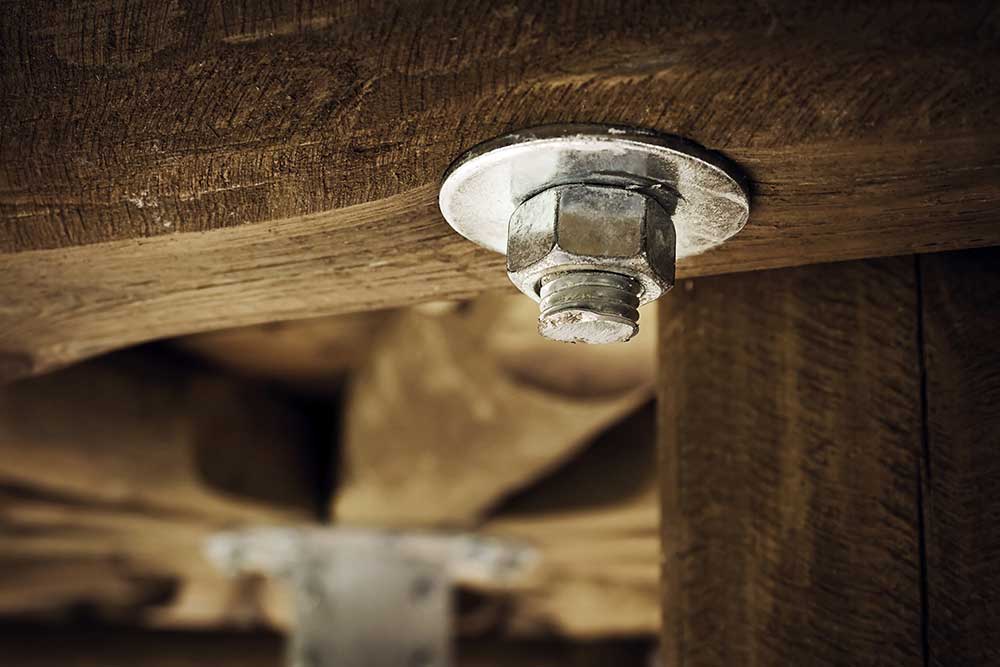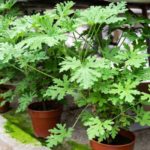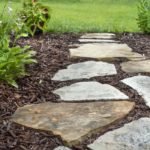Mulching comes in handy as a practical and economical means of controlling weeds on your farm or home garden. Whether you’re using organic or inorganic mulch, you’ll need to apply it correctly in order to control weeds effectively — grass included.
Grass will grow through mulch if you only lay down a thin layer of mulch cover or spread it unevenly. To prevent grass from growing through, use landscaping fabric (or newspapers), spray the grass with vinegar, compost fresh mulch, and edge the mulched area. Remove grass before mulching.
If you mulch properly, grass shouldn’t be too much of an issue. So let’s take a look at how you should use mulch to keep grass at bay and whether you need to remove grass before mulching.
Can Grass Grow Through Mulch?

Mulch should stop the growth of grass by blocking sunshine and water penetration. However, you shouldn’t be surprised if it doesn’t completely inhibit the growth of grass and weeds. This is usually due to certain avoidable mistakes.
For example, water and air can still penetrate if your layer of mulch is too thin or scattered non-uniformly. If grass attains other nutrients, it will easily grow through the mulch.
It’s therefore crucial to note that grass will grow and thrive through weak mulching, given the right conditions. But if you’ve done your mulching properly, grass shouldn’t grow underneath.
Occasionally, grass can also emerge on top of your mulch and start growing.
How to Prevent Grass Growing Through Mulch
Mulch is a valuable gardening tool, but you need to apply it correctly so that it can do its job effectively. If you’ve noticed some grass and other weeds emerging through the mulch, you can still get rid of them.
These are the five practical ways you can prevent grass from growing through mulch:
Use Landscaping Fabric
Using landscaping fabric (on Amazon) is one of the simplest and most effective solutions to prevent grass growth through your mulch layer.
Landscaping fabric is usually made from a textile that works just like mulch. To use landscaping fabric, place it over the soil, then cover it with mulch.
This creates a stronger barrier to water and sunlight, completely killing any grass beneath it. You can buy landscaping fabric from home improvement stores and plant nurseries.
Create a Newspaper Layer & Spread Mulch on Top
If there’s short grass in the area you want to lay mulch over, first cover the grass with newspapers. It works best if your newspaper layers are at least 10 sheets thick. You can also use cardboard if you don’t have that many newspapers.
Note: Only use newspaper printed in black and white since color and glossy papers may have chemicals that are dangerous to plants.
These are the steps for laying newspapers and covering them with mulch:
- Completely uproot perennial weeds like oxalis and dandelions. They’re usually tough and can regrow year after year once the mulch has broken down.
- Lay down thick newspaper layers or cardboard and overlap the edges by 3 to 4 inches. This provides a better barrier to grass and other weeds.
- Wet the newspaper or cardboard generously with your garden hose. The water will weigh down the paper and bond it lightly as you apply mulch. If you notice the paper has shifted in some areas, lay more and wet it.
- Carefully spread a layer of mulch over the newspaper (4” to 6” thick). Remember, the newspaper or cardboard is now delicate. You don’t want to tear or shift it.
- Once you’ve laid the mulch, wet it to compact it further.
You should now wait at least three months before planting in the area. This allows the newspaper or cardboard layer time to break down as the mulch kills the grass beneath it. You can always wet the mulch so that it’s not blown away by strong winds.
Create Deep Edges Around the Mulched Area
Edge the areas around your mulched garden or flowerbed. This prevents grass from making its way under the mulch.
Spray the Encroaching Grass With Vinegar
Spraying the encroaching grass with vinegar is a natural and cheap way to kill it. Savvy gardeners mix the vinegar with liquid dish soap. This creates a thicker solution that will easily stick to the grass.
When you spot grass creeping through the mulch, spray it directly with the soap and vinegar solution. While this isn’t a permanent fix, it’s still effective for dealing with stubborn weeds and grass.
Compost Fresh Mulch to Kill Grass Seeds
Let fresh mulch sit a few months in a compost pit to kill grass seeds and any sprouting weeds.
Mulch materials like hay, manure, and shredded bush often contain viable grass seeds. But if you compost it long enough, it will kill grass seeds since everything is decomposing anyway.
Will Mulch Kill the Grass Growing Underneath?
Mulch will kill grass growing underneath if you apply it correctly. A thick enough layer of mulch will block sunlight, water, and air from reaching the grass below.
The grass therefore stops growing and the area will be ready for planting after some time.
Do You Need to Remove Grass Before Mulching?

You should remove tall grasses before mulching, so that the mulch can work more effectively. As a rule of thumb, you can leave grass that’s 3 inches long or less.
However, if there are perennial weeds, you should remove them completely — no matter how short they are. If you don’t deal with them properly, they’ll grow back again and again.
And if you’re an organic farmer, you may be forced to use expensive mechanized means. At worst, you’ll be compelled to use the same herbicides you despise. Perennial weeds have hardy seeds that will simply sprout once the mulch has broken down.
Once you’ve removed tall grass and perennial weeds, lay a thick layer of mulch on the soil. This completely inhibits new grass and weeds from growing.








